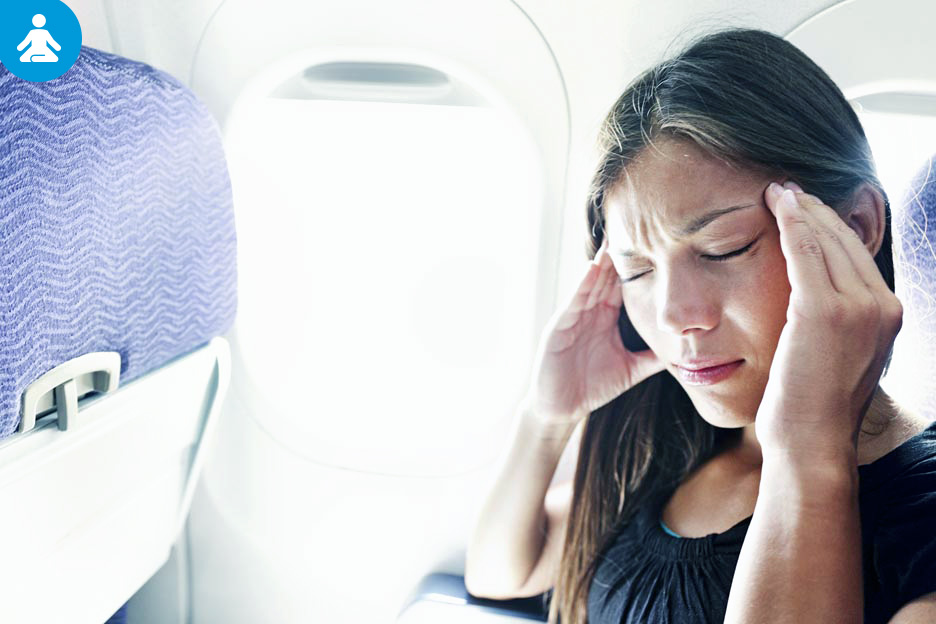You love to travel, but the thought of taking a boat or an airplane makes you feel nauseous. Don’t let motion sickness get in the way of enjoying travel and adventure. There are many solutions for making travel as pleasant as possible.

Why do we experience motion sickness?
Do you anyone for whom long journeys in cars, trains, airplanes, and boats are unpleasant experiences. This may be the case with your children, which may be why the line “Are we there yet?” has become such a familiar sound when you travel with them.
Motion sickness occurs when the body feels motion that the brain doesn’t perceive. For example, airplane passengers feel that their environment is stable since they don’t see the aircraft moving. However, their bodies feel turbulence, which may bring on the unpleasant symptoms of motion sickness. The process occurs in a specific area of the inner ear, which regulates balance.
When motion sickness occurs
Motion sickness is characterized by nausea and vomiting. However, other symptoms may be present, such as:
- Headache
- Feeling hot or sick
- Paleness
- Abdominal discomfort
- Perspiration
- Dizziness
The likelihood of having these symptoms depends on the mode of transportation you use. Seasickness is more common than airsickness, which in turn is more common than carsickness. Trains cause less motion sickness (nausea and vomiting) than other modes of transportation. Individual factors can also influence your susceptibility to motion sickness, including being a woman, age (children are particularly vulnerable), emotions, certain medications, and illness.
Other factors may favour or exacerbate symptoms, for example:
- Cigarette smoke
- Poor ventilation
- Heat
- The sight of food
- Certain odours
- Disruptive noise
- Anxiety or the fear of being sick
Helpful tips
Regardless of your mode of transportation, there are things you can do to reduce the likelihood of suffering from motion sickness:
- On cruises, choose a cabin at the lower levels of the ship and near the middle of the vessel. This minimizes the motion you feel. Go on deck frequently to enjoy fresh air and focus on a point on the horizon.
- In airplanes, choose a seat in the middle rows of the aircraft where there is less motion. Sit by the window in order to be able to see outside. If you can’t look out the window, keep your eyes shut.
- In cars, buses, and trains, sit facing the direction in which you’re moving. Choose a seat that allows to watch the road or, whenever possible, drive yourself.
- Don’t smoke; ask your travel companions not to smoke either.
- In all cases, avoid reading or playing video games. Keep busy by listening to music, or simply relax.
As for food, it’s best to take several small snacks to minimize motion sickness. Avoid fatty and spicy foods as well as alcohol before you leave.
Don’t forget to take a recipient, such as a plastic bag, and cleansing wipes in case you do get sick.
Medication
If the measures above are not enough to deal with your motion sickness, please know that there are medications available over the counter and under consultation with a pharmacist. Dimenhydrinate is often used for this purpose. Scopolamine patches may be useful on long trips, for instance, on a cruise ship. It can relieve motion sickness symptoms for three days. However, these two medications cause drowsiness, which is inconvenient when you travel.
Ginger may also be a useful alternative, since it doesn’t cause drowsiness.
Your pharmacist can help!
Consult your pharmacist who will be able to recommend and prescribe an appropriate product to help you prevent and treat motion sickness. He or she will also inform you about the terms of use. Don't hesitate to consult your pharmacist about motion sickness – that way you can get the most out of your travels.
